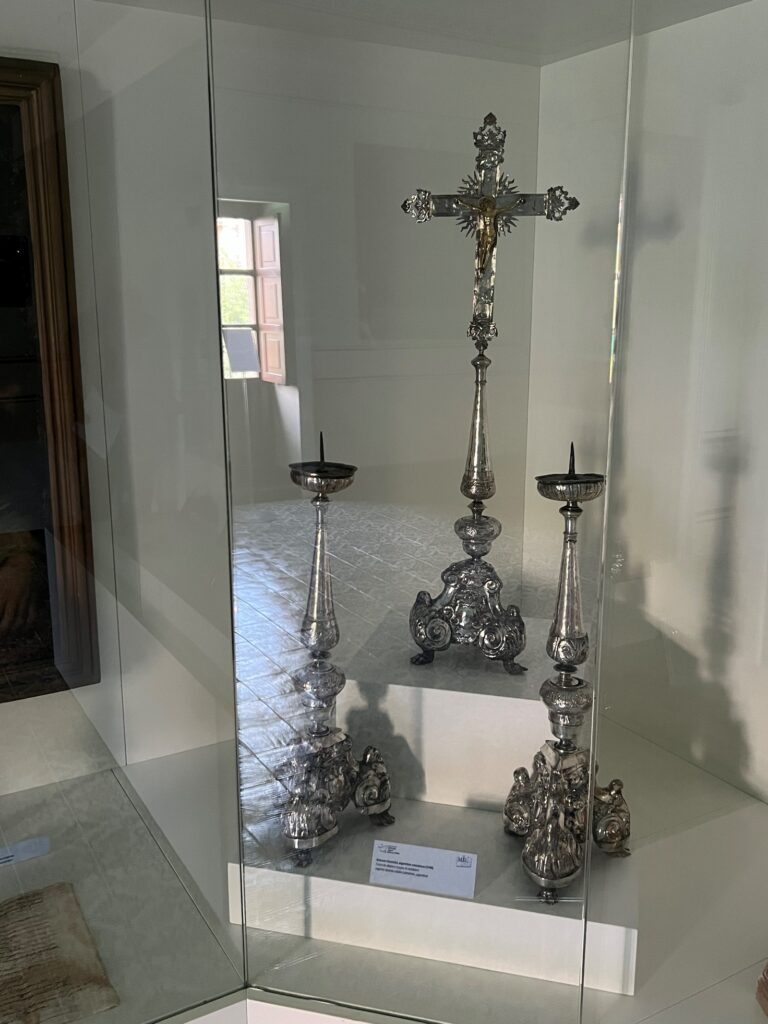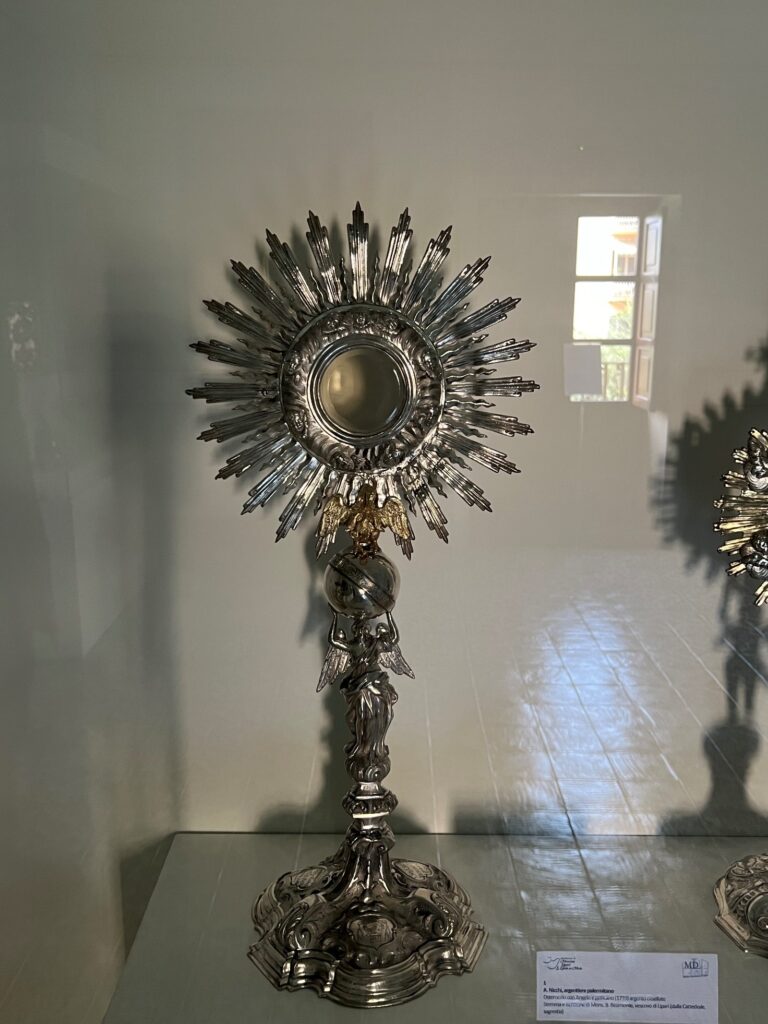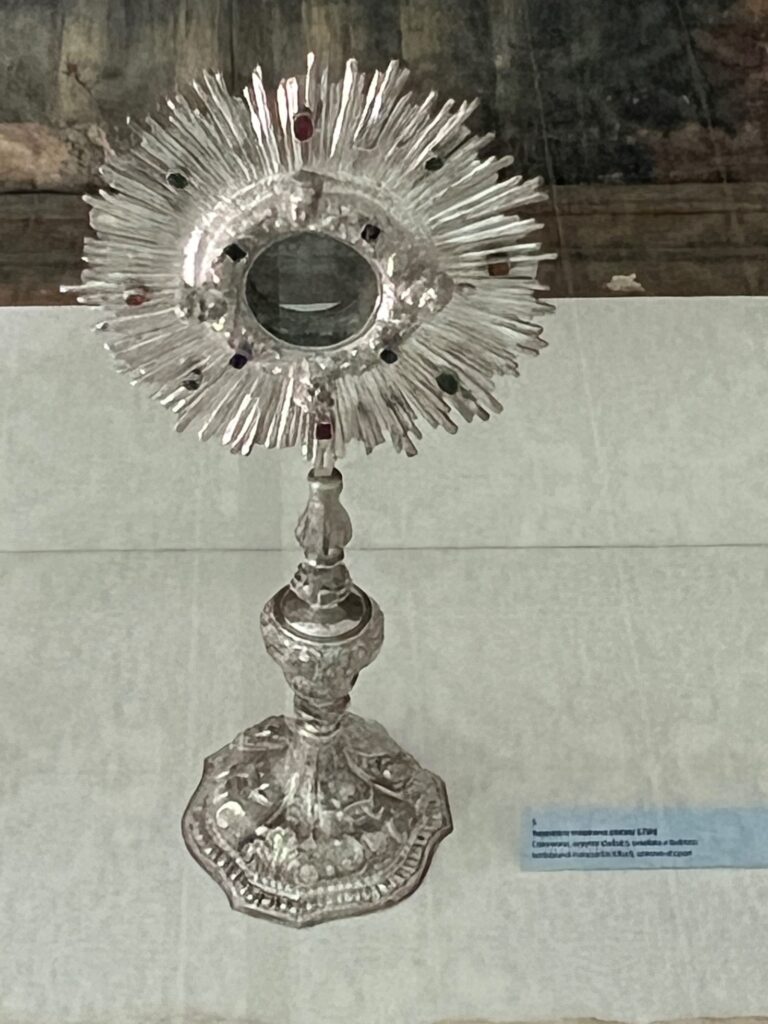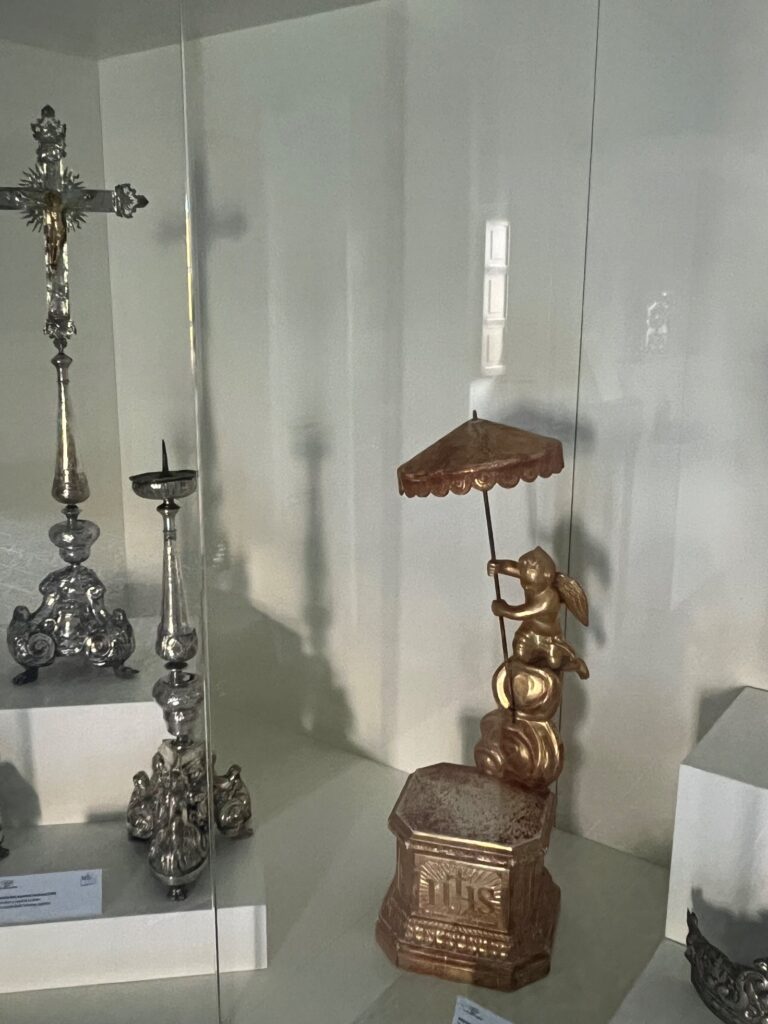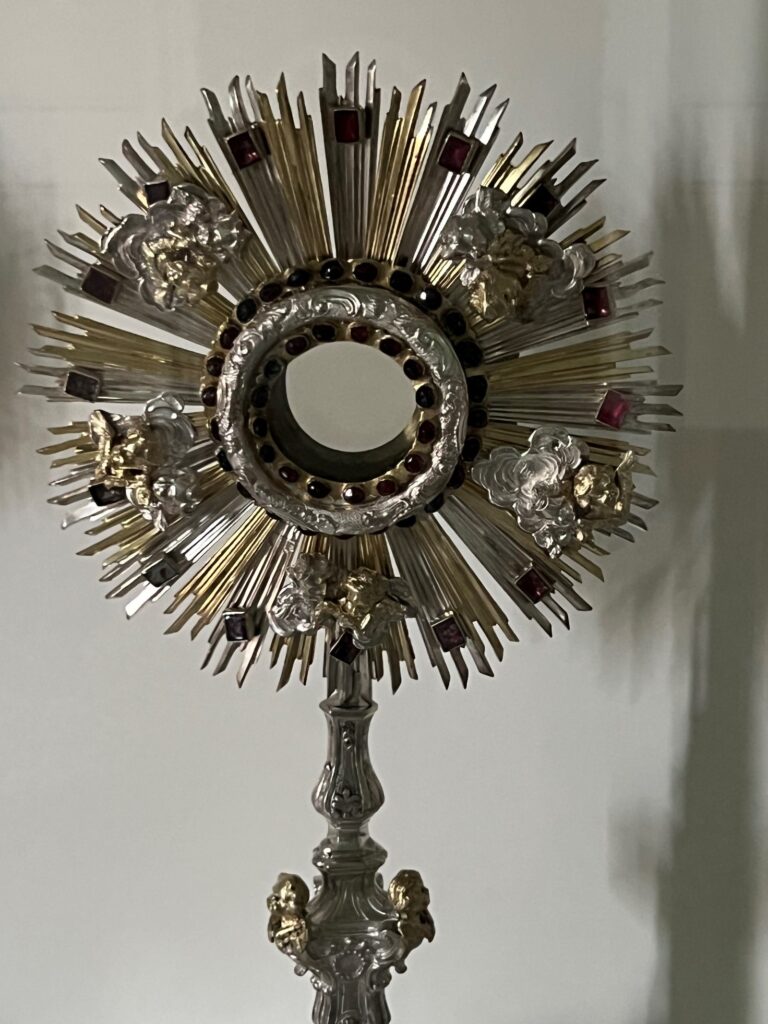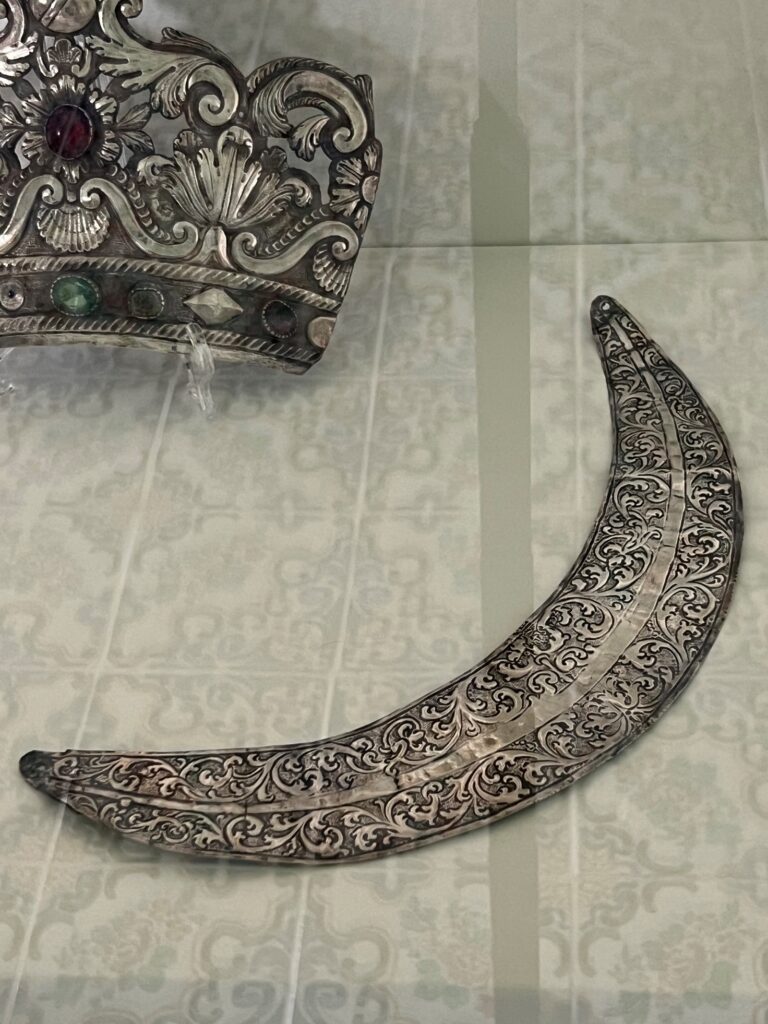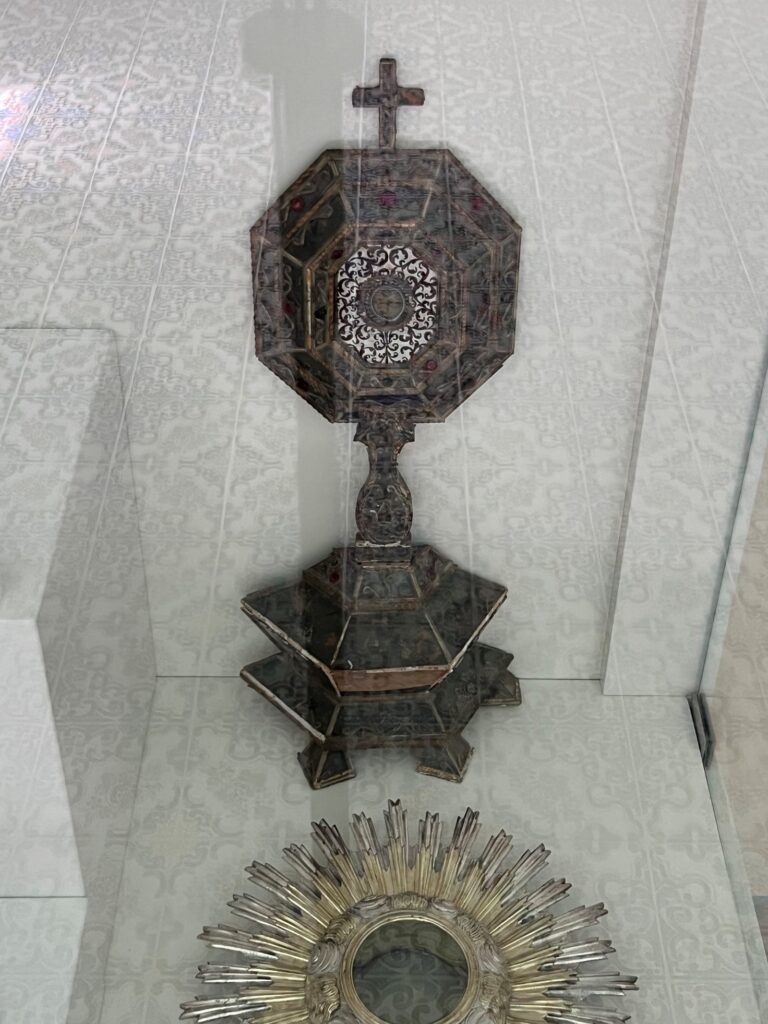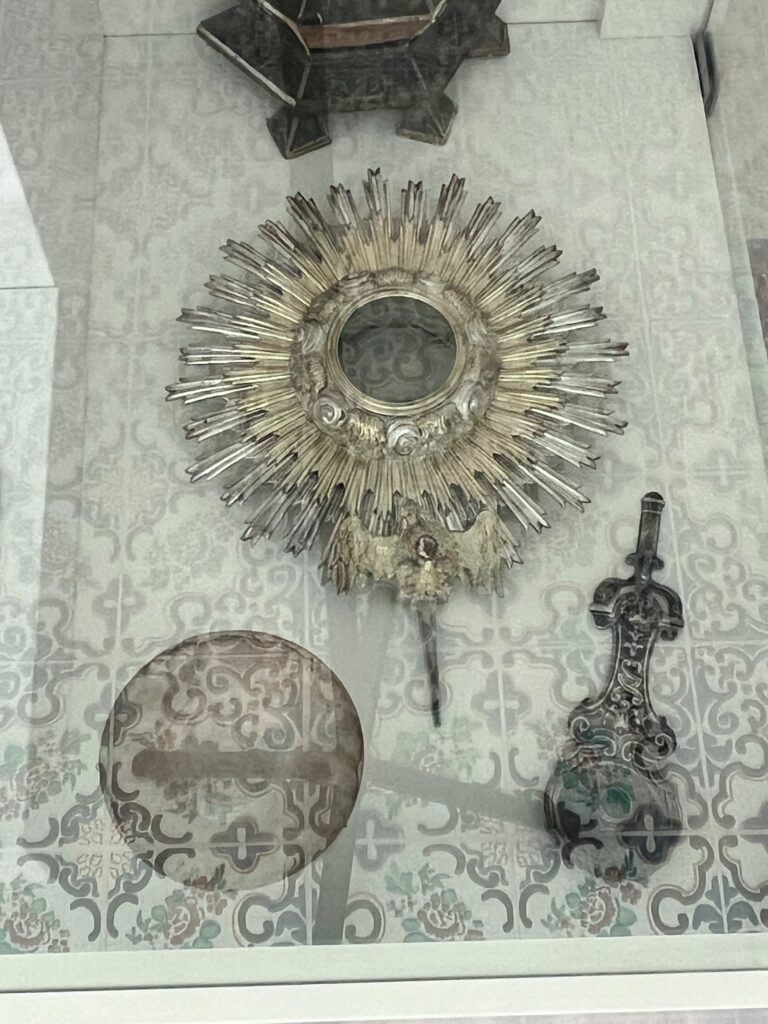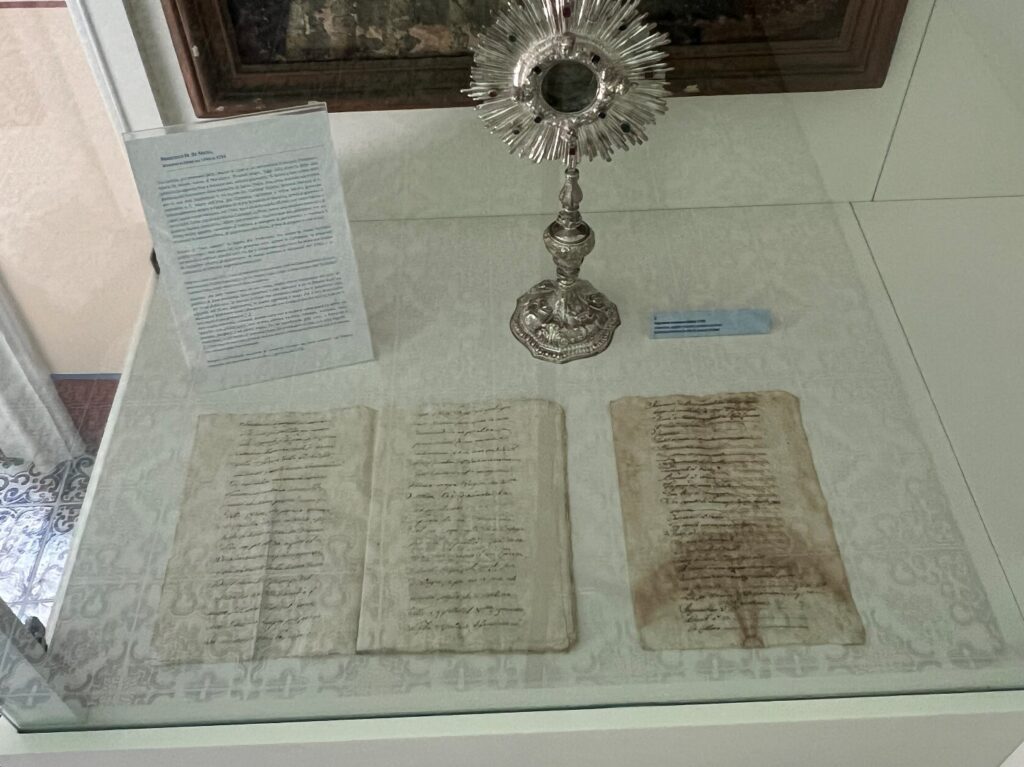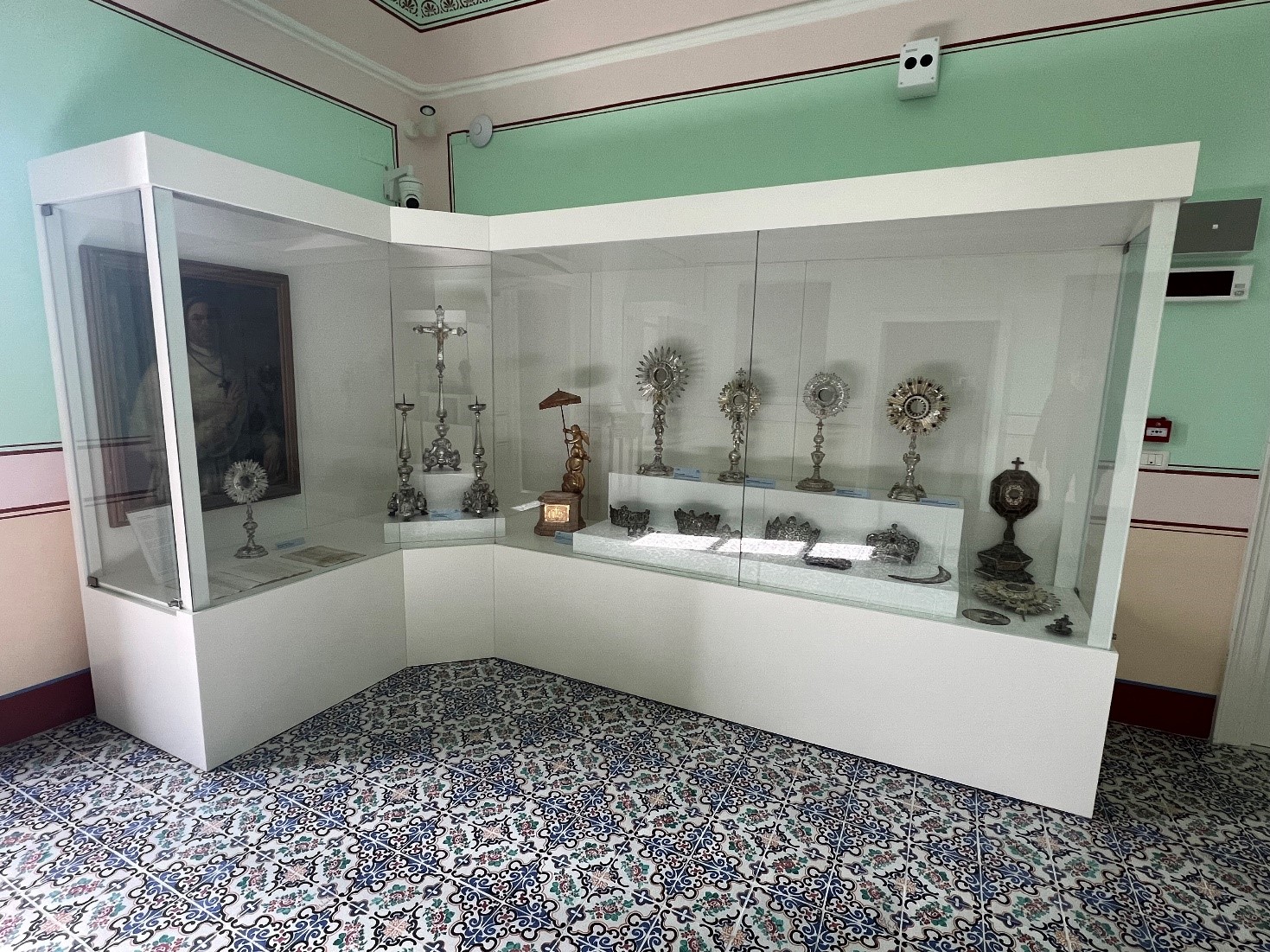(Room of silverware)
The showcase contains:
Artefacts from the 17th century, hallmarked by the Messina silversmith Antonio Dominici, active from 1665 to 1699
ALTAR CROSS AND PAIR OF CANDLESTICKS
From the sacristy of Lipari Cathedral
This silver altar service consists of a cross and two candlesticks, each with a tripartite base with angular volutes on lion feet, decorated with large acanthus leaves. A baluster stem with a large vase-like knot develops from the base, decorated with phytomorphic motifs.
Stylistically similar to the candlesticks is the silver cross with the gilded effigy of Christ, around whose head is a baroque halo of rays and swords. The inscriptions inside the medallions on the bases most probably refer to a restoration of the service carried out in 1746, at the time of the bishopric of Msgr. Francesco M. De Miceli, whose stylised coat of arms – three stars and a half moon – is engraved on one of the shields
Artefact dated 1739 and hallmarked by silversmith A. Nicchi
MONSTRANCE OF MONS. BEAMONTE
It comes from the sacristy of Lipari Cathedral.
The monstrance, made of chiselled silver, bears on the base the coat of arms of Monsignor Bernardo M. Beamonte, a Carmelite friar of Palermo origin and bishop of Lipari from 1733 to 1742, who commissioned it in 1739, as the inscription on the base itself reads.
The shaft is characterised by the presence of a winged figure, executed by casting, holding a globe on its head crossed by a band engraved with the twelve signs of the zodiac. On the globe, supporting the upper sphere, rests the Christological symbol of the pelican ripping open its breast to feed its young, a clear allusion to the Sacrament of the Eucharist. The shrine is decorated on the lid with a succession of whorls below a gilded silver apical cross. Bishop Beamonte, a man of great piety and charity, particularly devoted to the Eucharist, is also responsible for the restoration of the Chapel of the Blessed Sacrament in the Cathedral, which bears a shield with his coat of arms on the entrance.
18th-century artefact by a Messina silversmith, dated 1746
MONSTRANCE OF MSGR. DE MICELI
From the church of the Rosario al Pozzo in Lipari.
Made of embossed, chiselled and chiselled silver, the monstrance, which has a wavy and refined decoration, bears on the base the coat-of-arms and inscription of Monsignor De Miceli, Bishop of Lipari from 1734 to 1753. The foot with a mixtilinear base, set on a step hemmed in by pods, has pilaster strips with acanthus leaves dividing the base into three mirrors on which are embossed three opposing ‘Cs’, closed at the top by crowns and bunches of grapes, each containing a scroll. On two of these is engraved the inscription: Franciscus De Miceli Episcopus Liparitanus 1746; inside the third cartouche are three stars and a half-moon, his heraldic crest.
Sicilian craftsmanship, probably 19th century
EUCHARISTIC DISPLAY TRUNK Carved and gilded wood – from the Bishop’s Palace
Mid-18th century artefact with hallmark of a Messina silversmith (1748)
MONSTRANCE WITH ANGEL AND GLOBE
From the Church of S. Pietro di Lipari
The work, in embossed, cast and embossed silver, bears a hallmark of a Messina silversmith’s workshop on the base and appears to be an object of serial production, characterised by decorations typical of the period. The mixtilinear base is bordered by moulded frames, the foot is decorated with phytomorphic elements alternating with ‘C’ shaped volutes. The node consists of a globe on which rests a cherub that acts as a stem and supports, with its hands and head, the upper sphere, characterised by dense rays and adorned with winged cherub heads among clouds.
Artefact from the second half of the 17th century
OSTENSORY
From the sacristy of Lipari Cathedral The object appears to have been made by a Messina workshop, as attested by the hallmark of Giuseppe d’Angelo, and is stylistically similar to the one made in 1684 by the silversmith Antonio Dominici for the Mother Church of Fiumedinisi, in the province of Messina.
Artefact from the first half of the 17th century by a Messina silversmith
MONSTRANCE WITH SEMI-PRECIOUS STONES
From the church of the Immacolata in Lipari. The monstrance, made of chiselled silver, bears on the base the inscription Sac. Ioseph Picone and bears in a relief roundel the effigy of the Immaculate Virgin. Adorning the base and the halo are gilded silver cherubs’ heads.
PAINTING CROWNS
Crowns, once applied to paintings of the Virgin and Saints, are made of embossed and pierced silver foil. On the back, two hooks were used to fasten the crowns to the canvas, above the heads of the saints.
dated 1636 (or 1736?)
Picture crown
Embossed and chiselled silver – from Lipari Cathedral
Palermo workshop dated 1758
Picture crown
Silver – from Lipari Cathedral
17th cent.
Picture crown
Embossed and chiselled silver – from Lipari Cathedral
18th-19th centuries
Picture crown
Embossed, chiselled silver and glass paste – from Lipari Cathedral
Messina silversmith 1704, possibly the silversmiths’ consul Michele Rizzo
Picture crescent
Decorated with vegetal whorls – from the Church of San Pietro in Lipari
17th century
Reliquary of San Giovanni Nepomuceno
Wood, glass and glass paste – from the sacristy of Lipari Cathedral Saint John of Nepomuk, a presbyter who lived between 1330 and 1393 in Bohemia, was canonised in 1729 and was immediately proposed as an exemplary model of priestly life, not only for his preaching skills, but above all for his defence, to the point of giving his life, of the freedom of the Church and the Sacraments, especially that of Confession. Canon Rodriguez attests to the presence of one of his paintings in the Church of the Immaculate Conception in the 19th century.
TESTAMENTO DI MONS. DE MICELI
Dall’Archivio Storico della Diocesi di Lipari – Testamenti dal 1608 al 1773
NOTAMENTO DEI BENI PRESENTI NEL PALAZZO VESCOVILE ALLA MORTE DI MONS. DE MICELI 1753
Dall’Archivio Storico della Diocesi di Lipari
TESTAMENT OF MONS. DE MICELI
From the Historical Archive of the Diocese of Lipari – Wills from 1608 to 1773
NOTATION OF ASSETS IN THE BISHOP’S PALACE AT THE DEATH OF MONS. DE MICELI 1753
From the Historical Archive of the Diocese of Lipari

